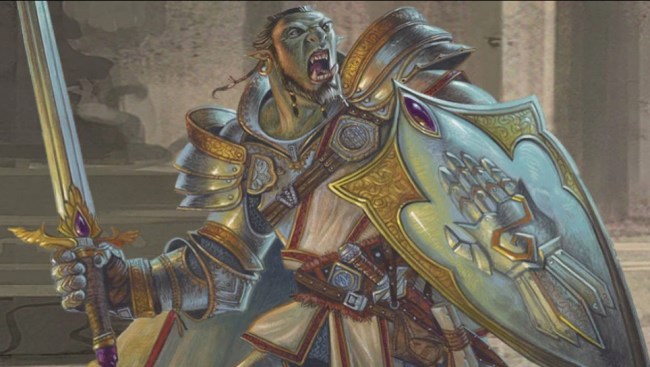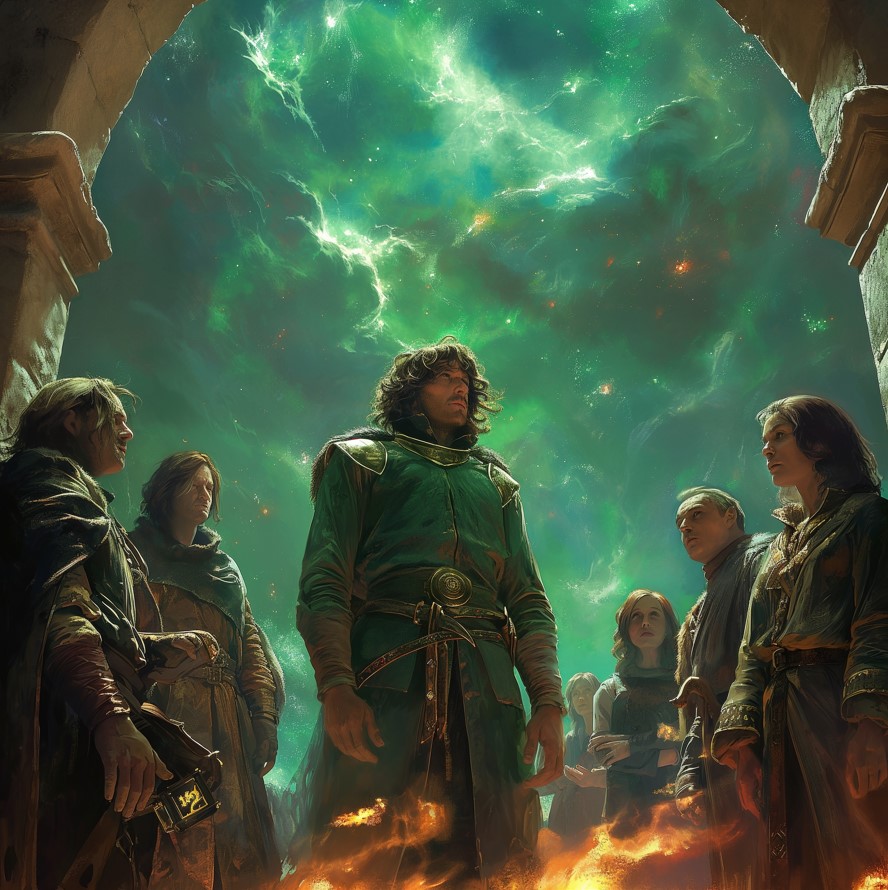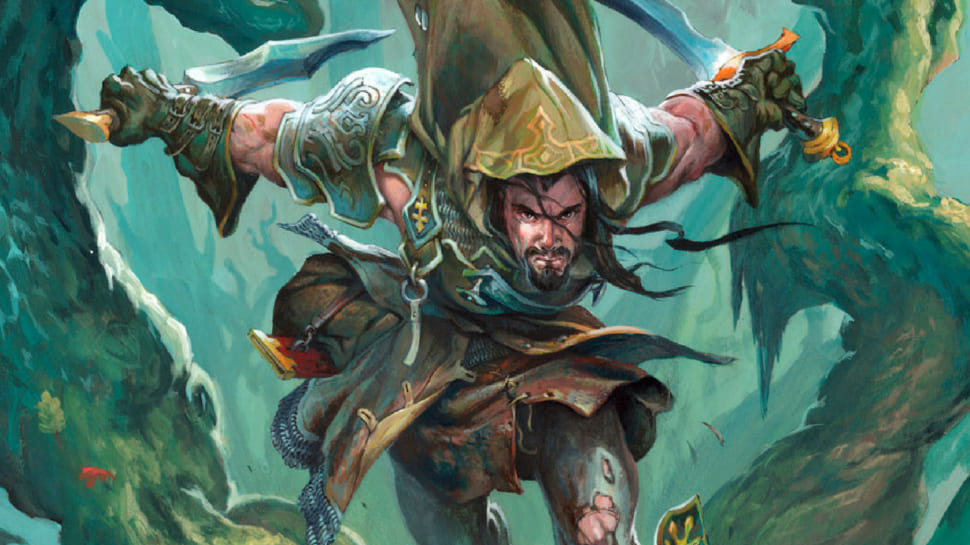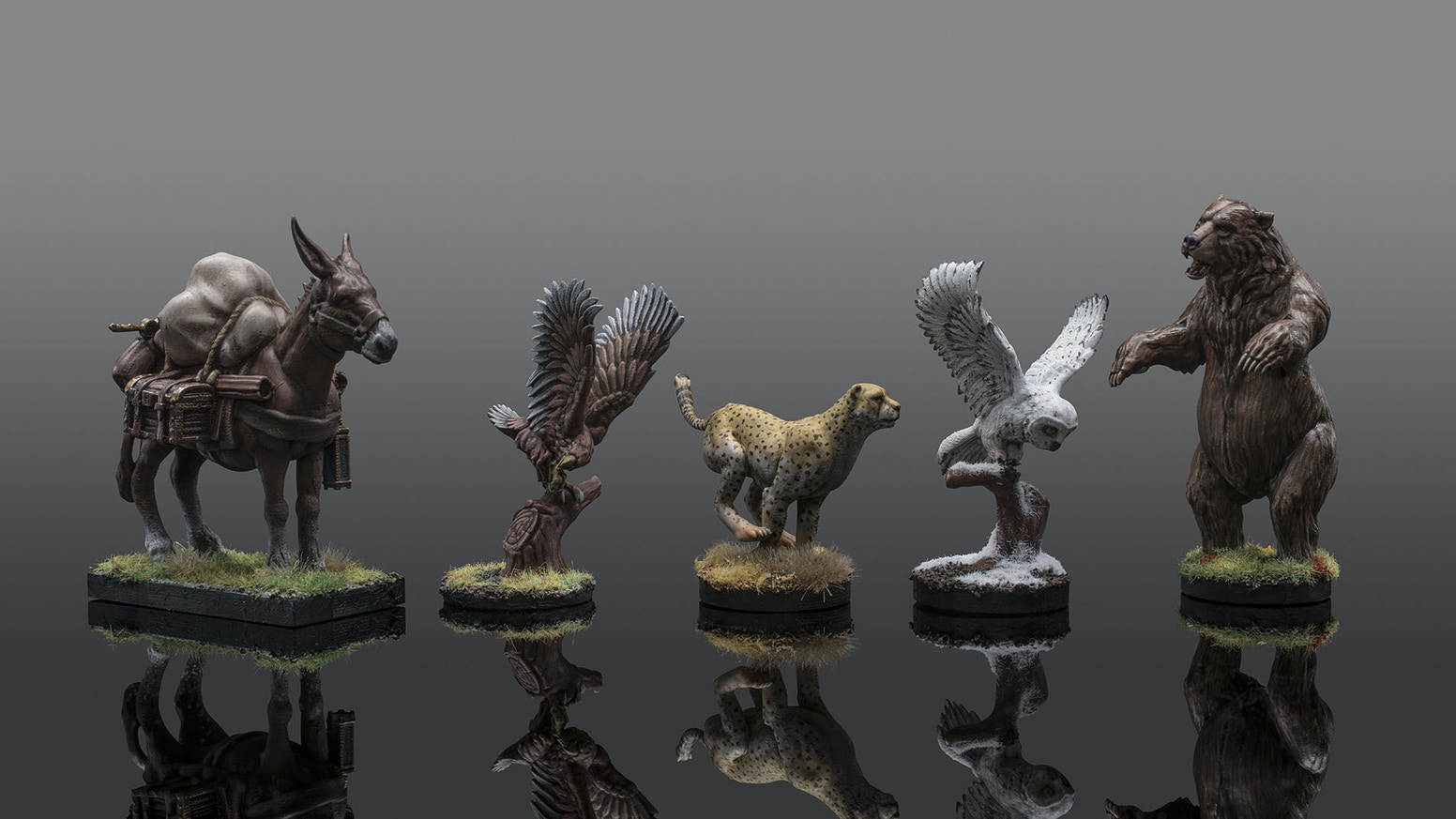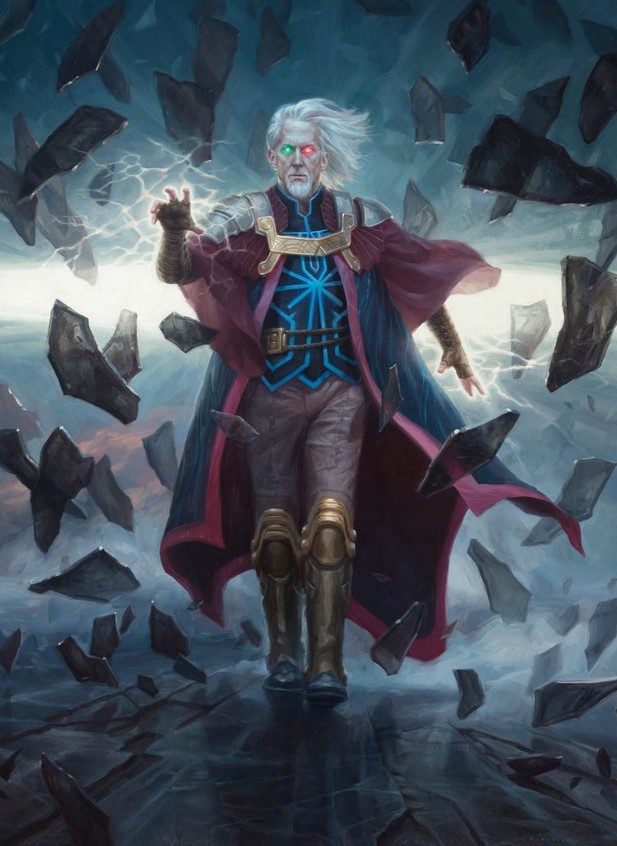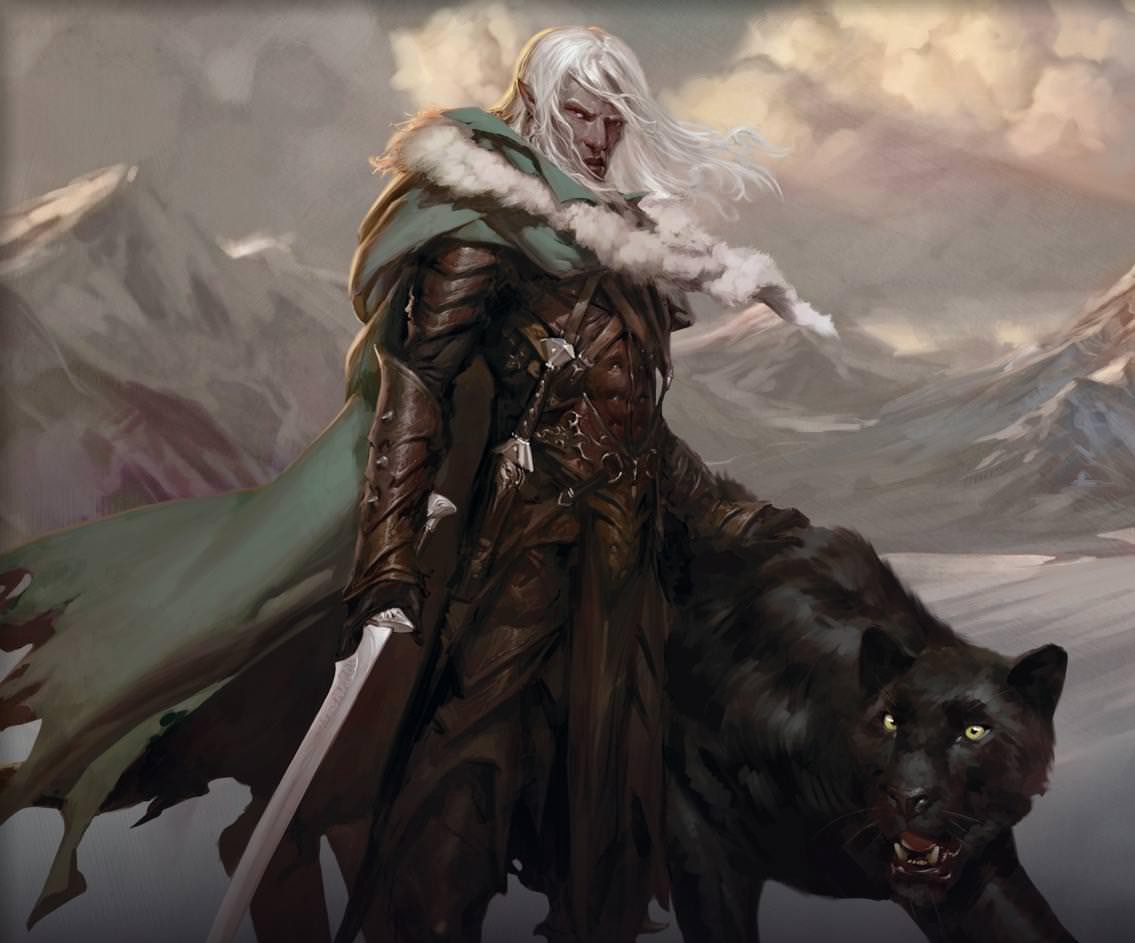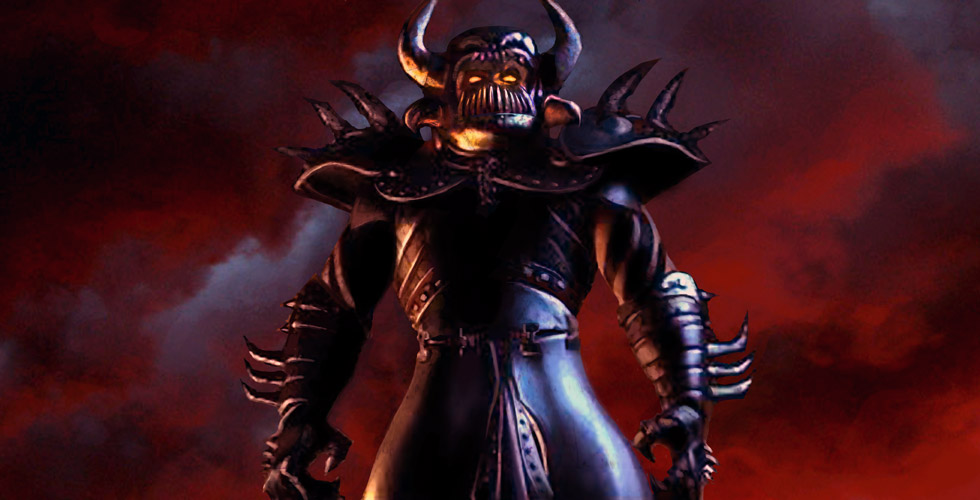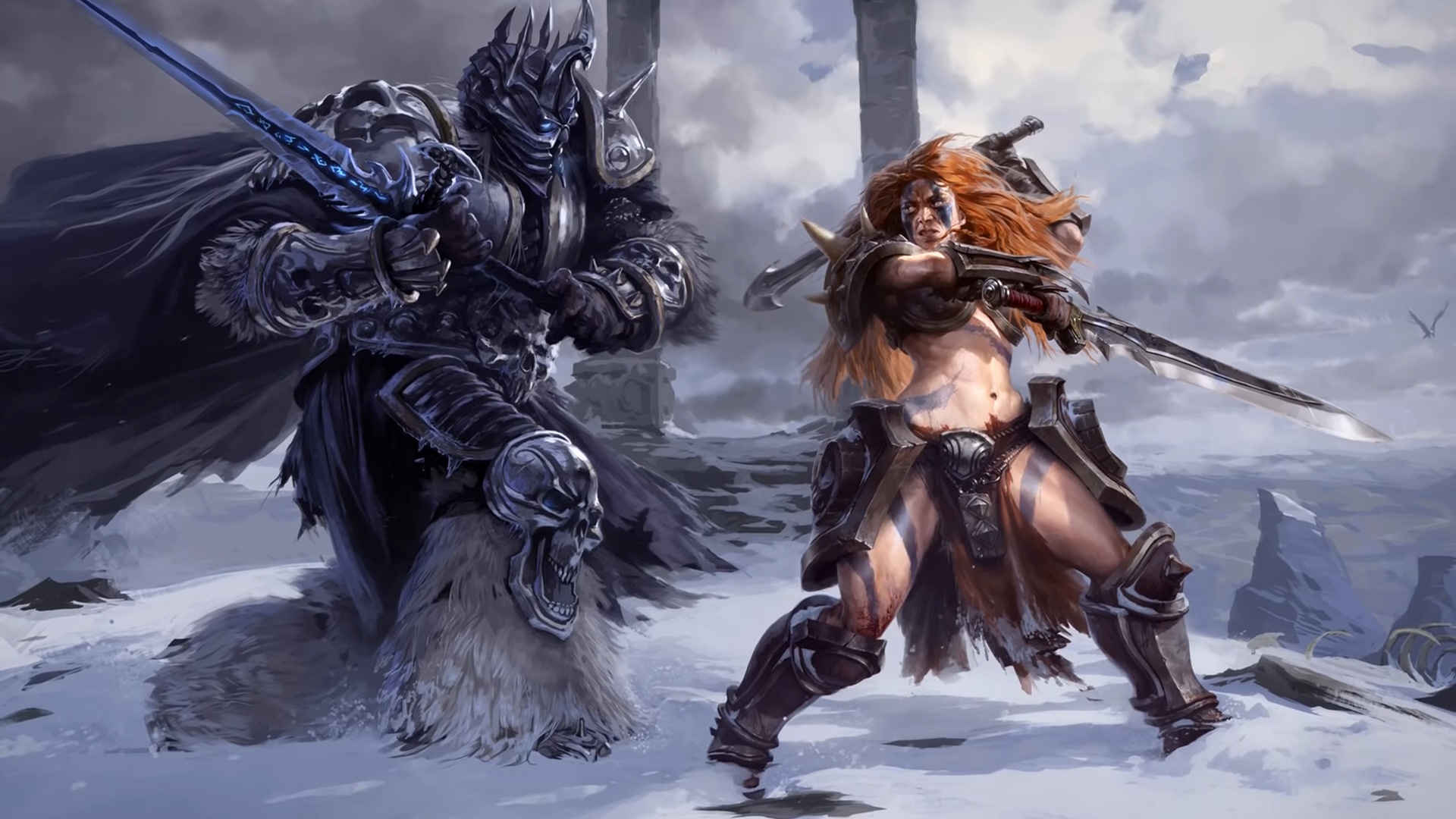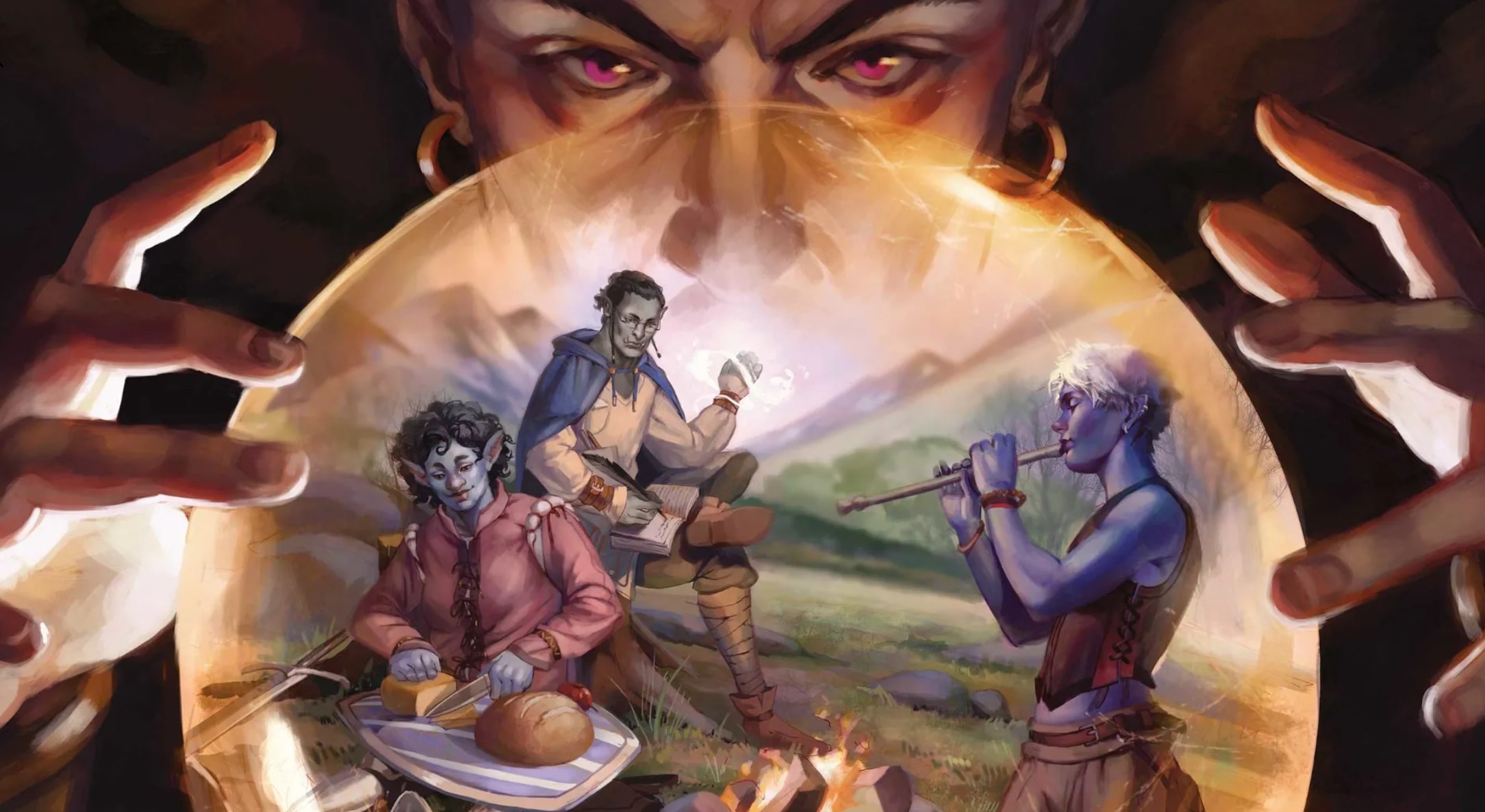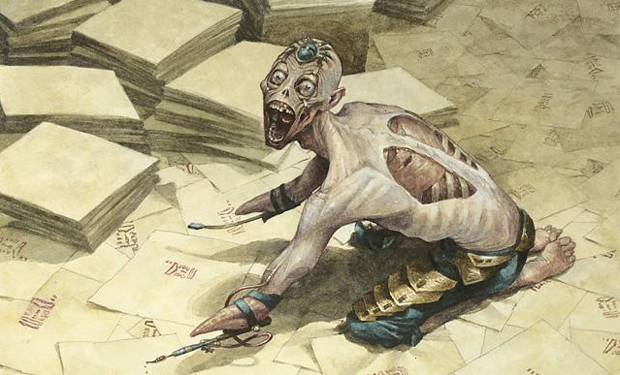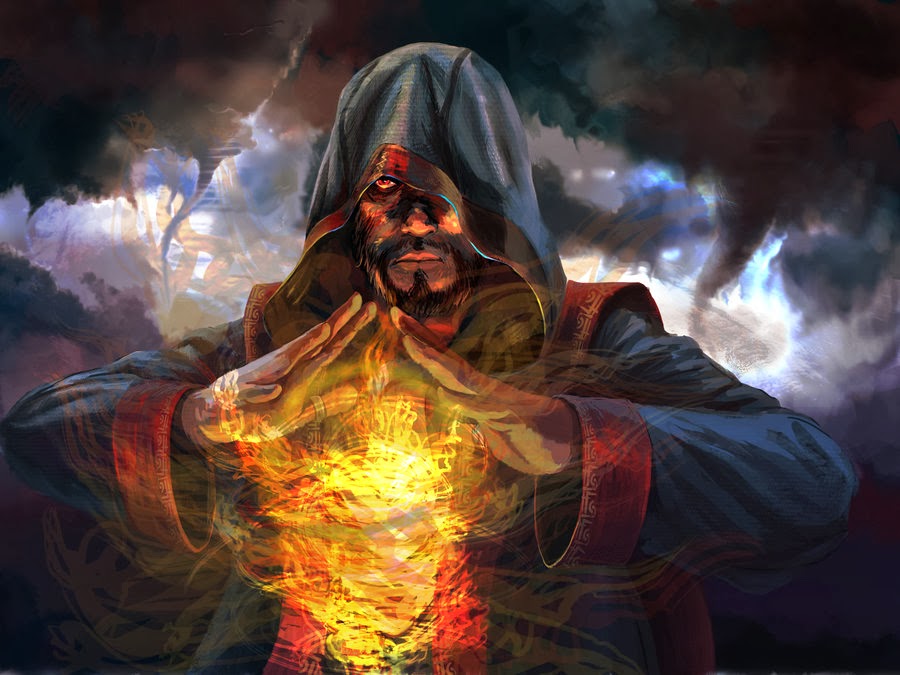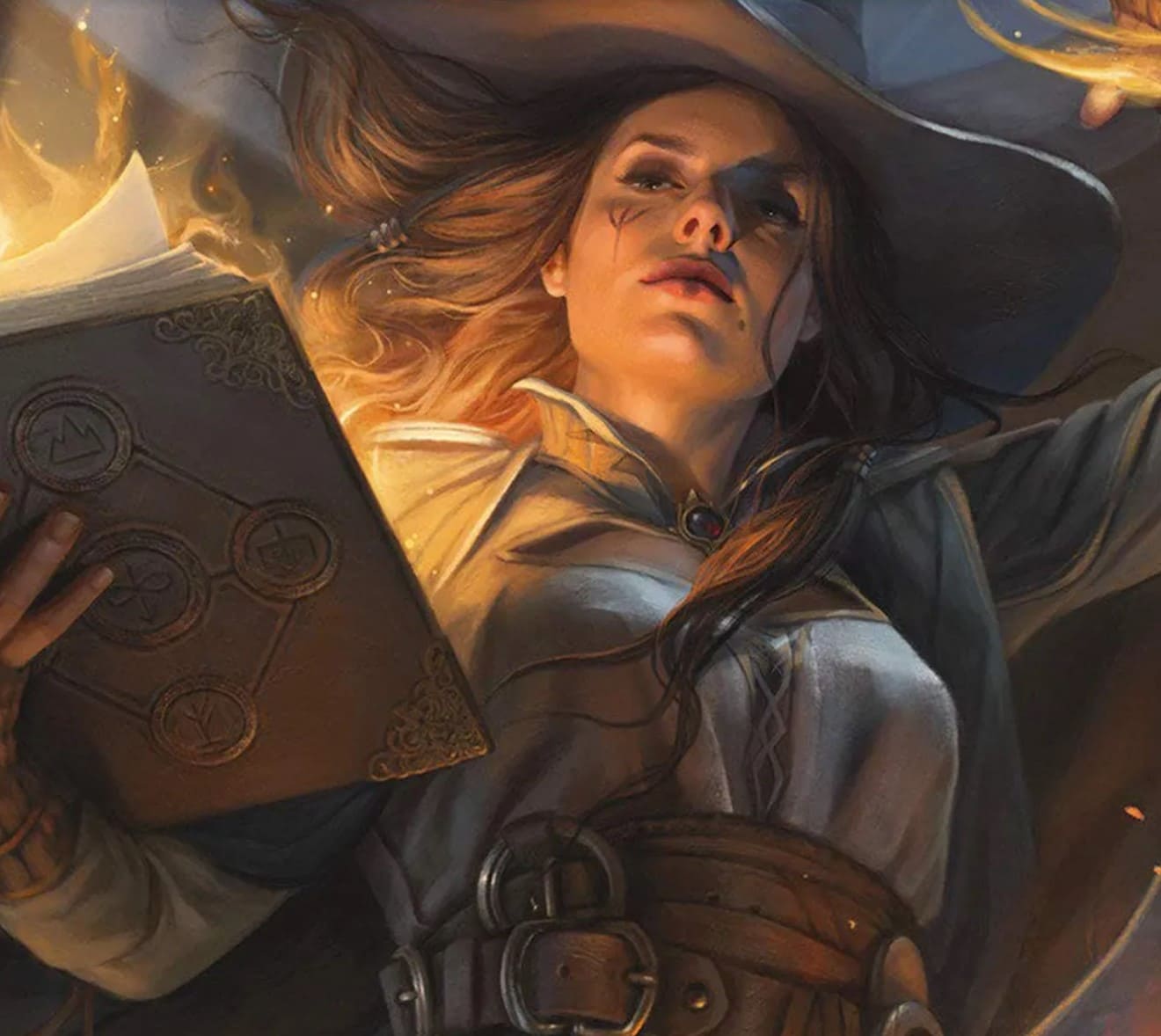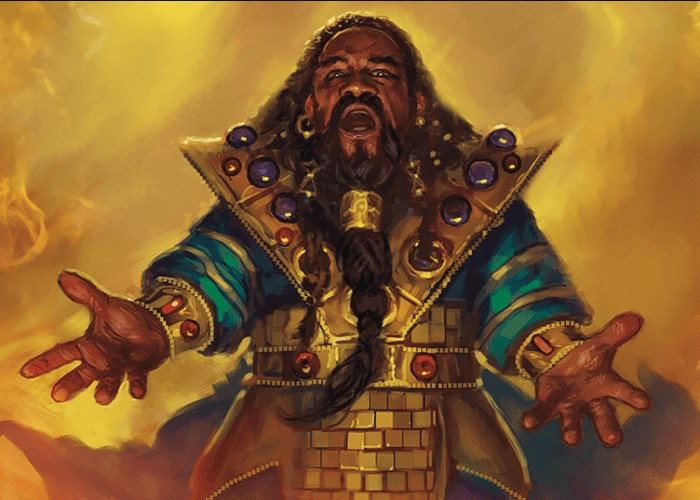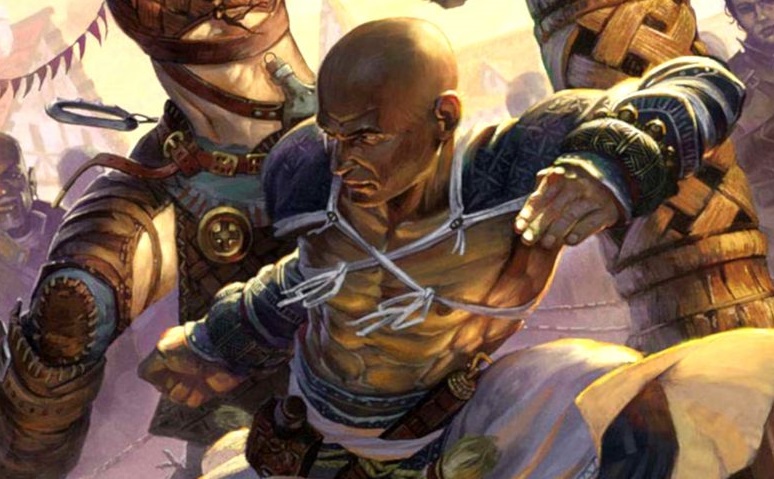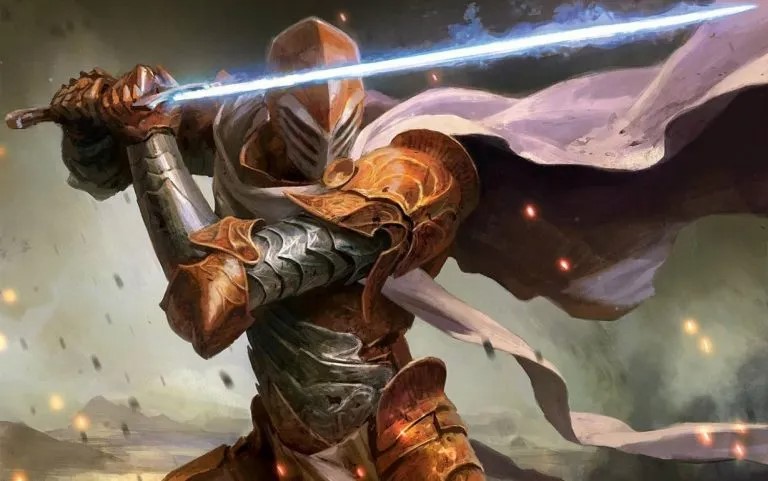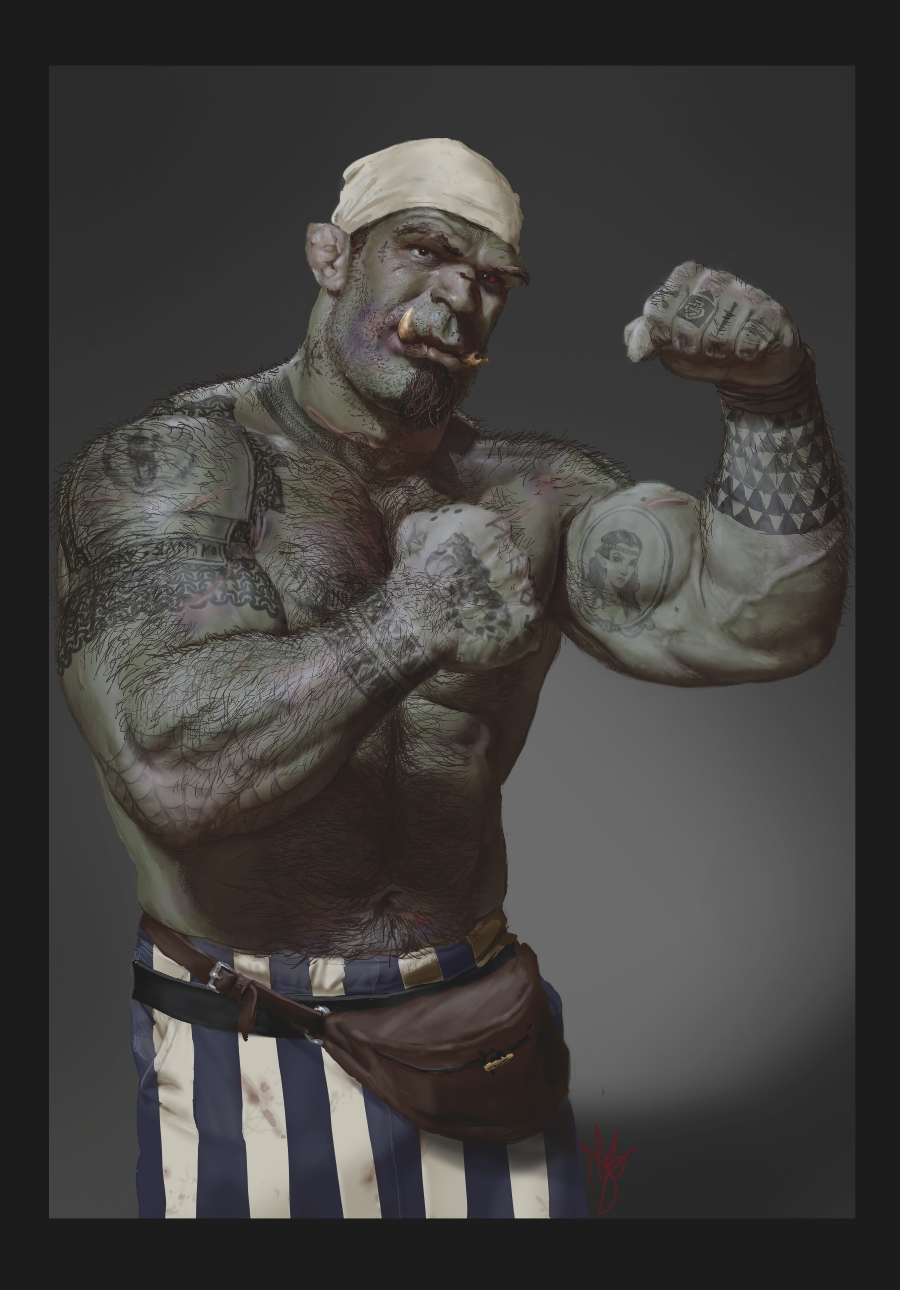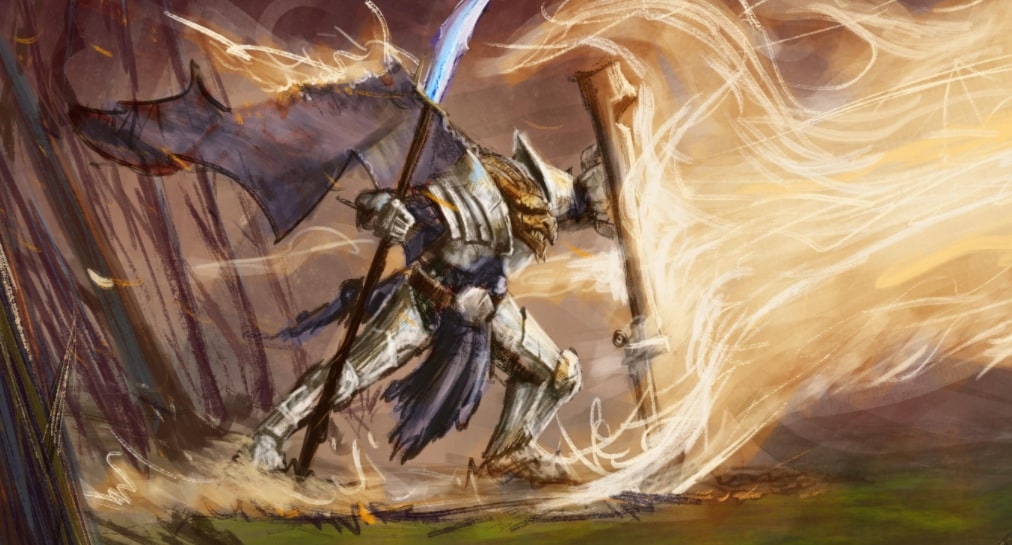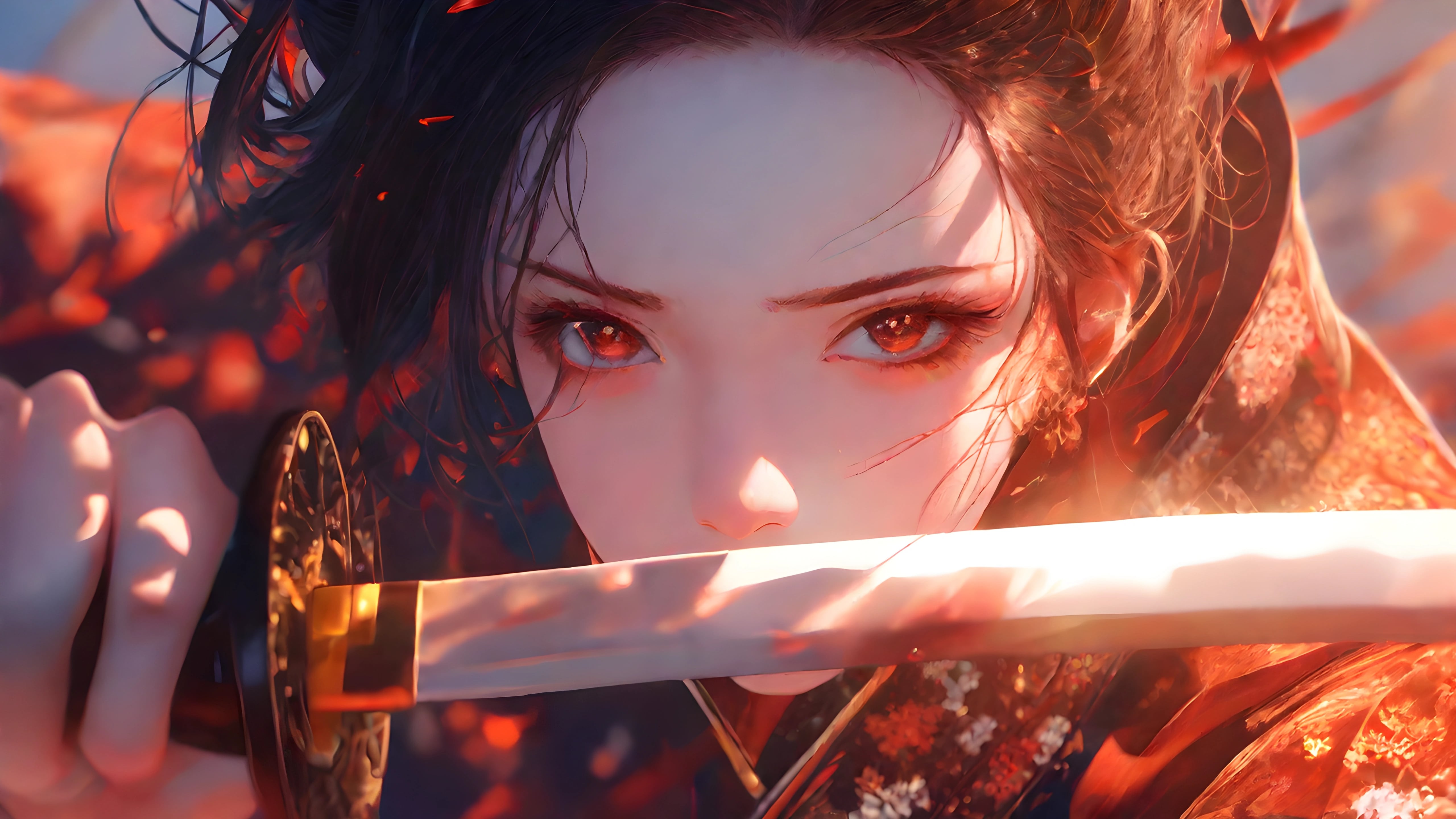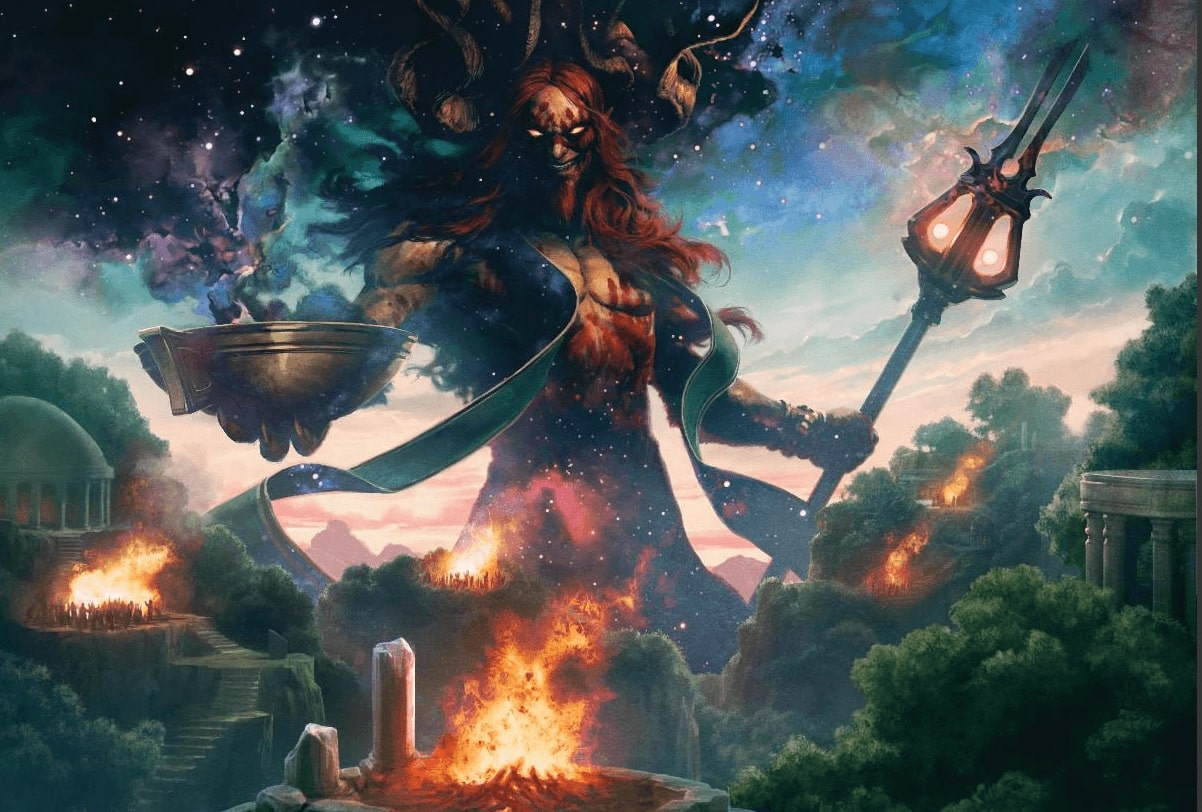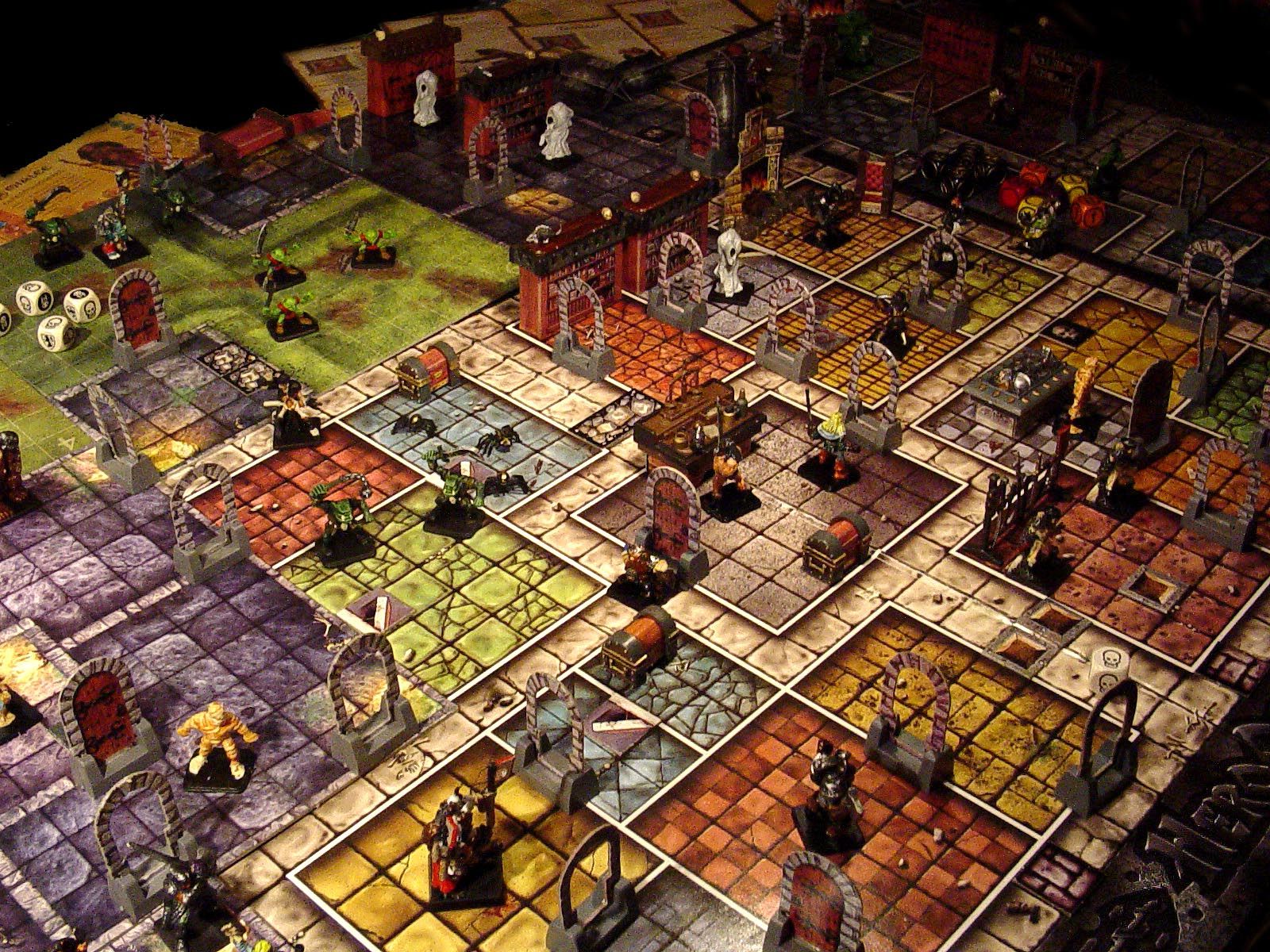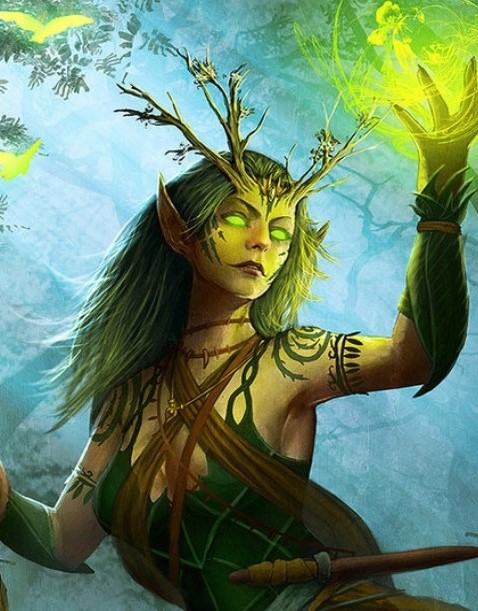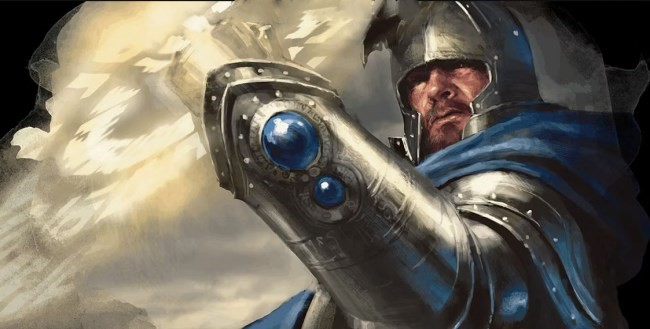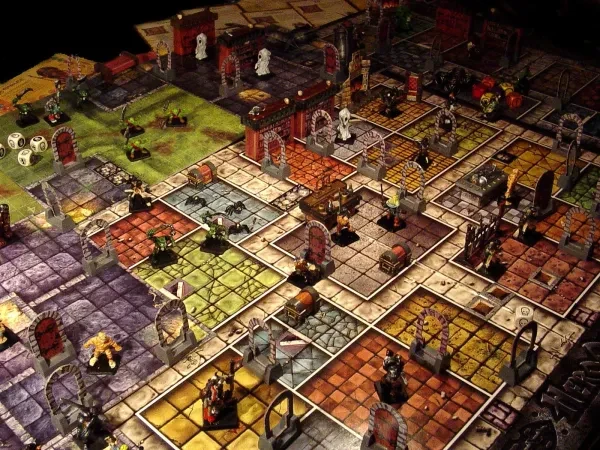
Are you having trouble picking scary monsters for your campaign?
As a Dungeon Master (DM), one of the best parts of planning a combat encounter is picking out the monsters you're going to use. Monsters are the game pieces that a DM can use to interact with the players, and getting to choose the your abilities and, in some cases, roleplay a really scary or interesting monster can add even more fun to your D&D adventures.
But there are so many monsters in the offiical rulebooks that it's easy to get overwhelmed by the sheer amount of options out there for you. I hope this list can help - here are the top 15 best horror monsters for your D&D campaign.
15. Intellect Devourer
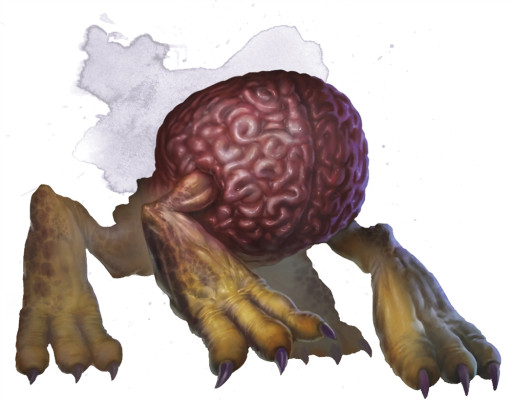
These terrible critters are bred by Mindflayers to hunt down victims. They're usually created by subjecting a brain to a terrible ritual, in which it sprouts legs and is filled with the same malicious intent as its masters.
Why Intellect Devourers Are Fun
While these critters are fairly physically weak - their Strength score is only 6 and they are classified as Tiny creatures - they can inflict a lot of psychological terror on your players. Their main attack, Devour Intellect, allows them to potentially reduce a character's Intelligence score to 0, effectively turning them into a vegetable until they can regain those points. Fighting Intellect Devourers can do permanent stat damage, and unprepared players can leave encounters filled with dread and loathing for the creatures.
Another perk of using Intellect Devourers, particularly in dungeons, is that their presence can indicate that larger, scarier enemies such as Mindflayers are in the area, instilling dread in your players. If you're trying to teach your players a lesson in preparedness, using Intellect Devourers as warnnig signs of larger enemies can be a great place to start.
Intellect Devourer Details
- Sourcebook: Monster Manual (pg. 191)
- Classification: Tiny aberration, lawful evil
- Challenge Rating: 2 (450 XP)
- Environments: Underdark
- Find its stats here.
14. Carrion Crawler
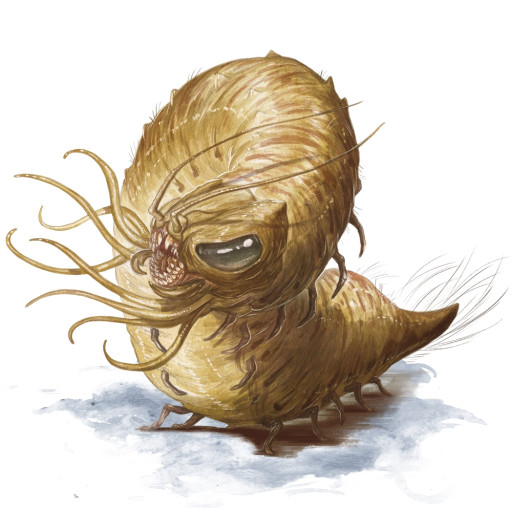
The worst part about these things is that when in an enclosed space, they crawl along the ceiling to get around. Picture this: your party is in a dungeon, looking for treasure and scanning along their route for predators, and this horrible thing jumps right down on their heads. I think I'd have to hang up my dice bag for the day after that.
Why Carrion Crawlers Are Fun
Beyond the obvious psychological terror, these critters offer a range of features for a DM that wants to make dungeon crawling more interesting. Their penchant for crawling up walls and on ceilings means that your party could be forced to resort to creative measures to deal with them - let's hope you've got an archer or a long-range spellcaster handy. While their attacks aren't terribly unique, using them in conjunction with other corpse-loving monsters can make a dungeon a creepy, crawly, terrifying new challenge.
Carrion Crawler Details
- Sourcebook: Monster Manual (pg. 37)
- Classification: Large monstrosity, unaligned
- Challenge Rating: 2 (450 XP)
- Environment: Underdark
- Find its stats here.
13. Gibbering Mouther
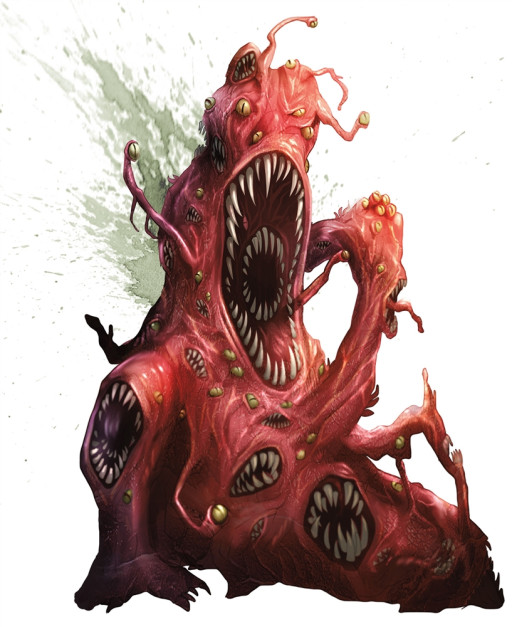
From a DM's perspective, describing this thing will be key to striking fear into your players' hearts. According to the official description from Wizards of the Coast, it is nothing but ooze-like matter dotted with eyes and teeth that moves by latching one of its mouths to the floor and dragging itself along. It is constantly screaming - each mouth on its body is from a different victim, and they all scream and cry discordantly at all times. Even imagining this thing in your mind's eyes is a nightmare.
Why Gibbering Mouthers Are Fun
Mechanically, this is a really versatile monster. They only have a CR of 2, so they're better suited to lower-level players, but they have a range of attacks that can make combat interesting. Their gibbering can cause players that fail a Wisdom save to stop in their tracks, use all of their movement going in a random direction, or even attack another player.
My favourite attack that this monster has is called Blinding Spittle. It's essentially a gooey flashbang - it explodes on impact with the ground, blinding anyone in the area who fails a Dexterity saving throw. Monsters with lower CRs often only have the basic Bite or Shove attacks, and it's cool to see different mechanics for monsters that are meant for lower-level parties.
Gibbering Mouther Details
- Sourcebook: Basic Rules (pg. 314)
- Classification: Medium aberration, neutral
- Challenge Rating: 2 (450 XP)
- Environments: Underdark
- Find its stats here.
12. Hags
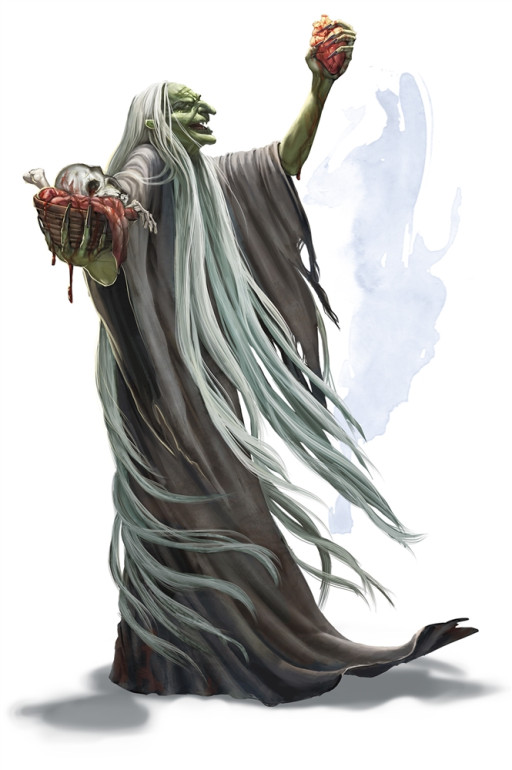
Why Hags Are Fun
Hags come with a whole host of mechanics that make them immensely fun for DMs. My favourite part is that they are typically found in groups of three, called covens. This mechanic, described in the sidebar alongside their stat blocks, allows you to mix and match types of hags in a group for even more interesting encounters.
Perhaps your Green Hag has a pair of Night Hags that she's in league with to further her nefarious plot to kidnap village children. Perhaps a Dusk Hag has teamed up with a Sea Hag and an Annis Hag to plot an attack on a kingdom that has wronged them. You can easily make up a group whose motives and abilities suit your adventure.
In terms of mechanics, hags can be tough in groups or alone. They're proficient in spellcasting and casting illusions to disguise themselves and throw off attackers. Hags range from CR 2 (Sea Hags) to CR 7 (Bheur Hags) and can be optimized for any adventuring party.
Hag Details
Sea Hag
- Sourcebook: Basic Rules (pg. 320)
- Classification: Medium fey, chaotic evil
- Challenge Rating: 2 (450 XP)
- Environments: Coastal, Underwater
- Get their stats here.
Green Hag
- Sourcebook: Basic Rules (pg. 319)
- Classification: Medium fey, neutral evil
- Challenge Rating: 3 (700 XP)
- Environments: Forest, Hill, Swamp
- Get their stats here.
Night Hag
- Sourcebook: Basic Rules (pg. 319)
- Classification: Medium fiend, neutral evil
- Challenge Rating: 5 (1800 XP)
- Environments: Forest, Hill, Swamp
- Find their stats here.
Dusk Hag
- Sourcebook: Eberron: Rising from the Last War (pg. 292)
- Classification: Medium fey, neutral evil
- Challenge Rating: 6 (2300 XP)
- Environments: Forest, Hill, Swamp
- Get their stats here.
Annis Hag
- Sourcebook: Volo's Guide to Monsters (pg. 159)
- Classification: Large fey, chaotic evil
- Challenge Rating: 6 (2300 XP)
- Environments: Hill, Mountain
- Get their stats here.
Bheur Hag
- Sourcebook: Volo's Guide to Monsters (pg. 160)
- Classification: Medium fey, chaotic evil
- Challenge Rating: 7 (2900 XP)
- Environments: Arctic
- Find their stats here.
11. Helmed Horror
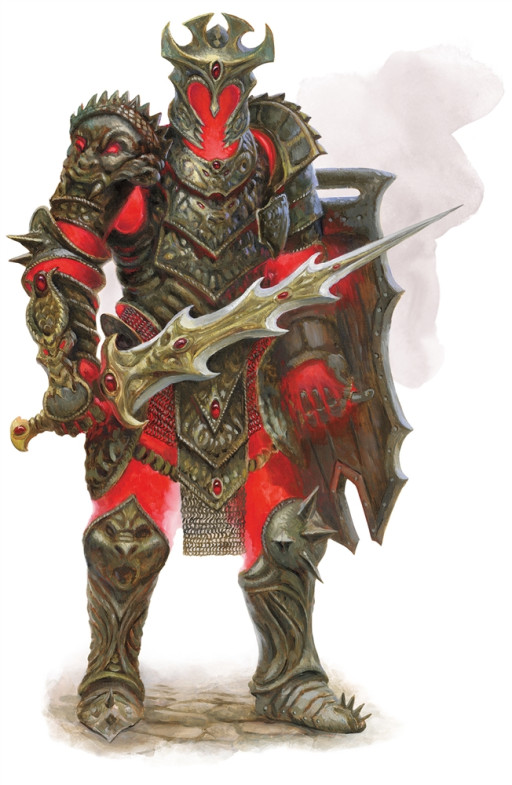
Helmed Horrors are intelligent enough to fight with the skill and foresight of a powerful warrior, and understand the intention behind orders rather than the simple, literal meaning of them. If a wizard tasks them with guarding an artifact, then they can take almost any action in completing that task. They are unendingly strong - perfect killing machines.
Why Helmed Horrors Are Fun
If you're tired of giving your Big Bad Bosses stupid minions like goblins and homunculi, then Helmed Horrors are the perfect solution. Their intelligence and ability to act independently of their crator can make them excellent guards or cronies for a higher enemy. They're tough to kill and can inflict significant damage on an unprepared party. Additionally, they're terrifying - imagine fghting a tireless knight who has no face behind its visor?
Helmed Horror Details
- Sourcebook: Monster Manual (pg. 183)
- Classification: Medium construct, neutral
- Challenge Rating: 4 (1100 XP)
- Environments: Dungeon
- Find their stats here.
10. Oblex
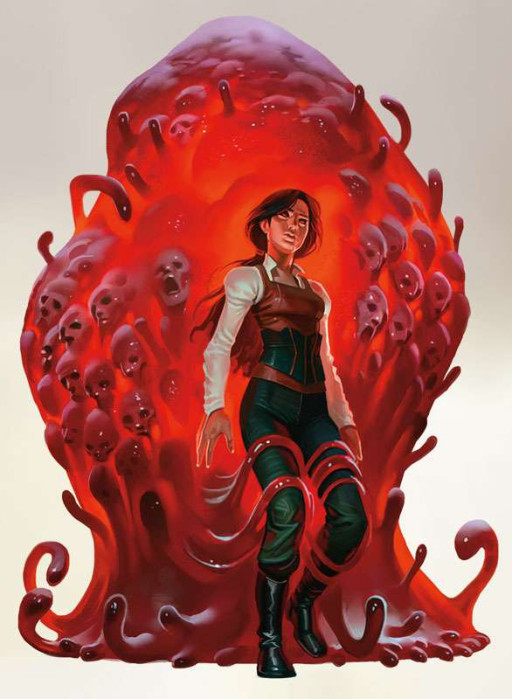
Why Oblexes Are Fun
There are all sorts of terrifying little details about these critters that can make them super fun for DMs to inflict on their players. Ooze creatures are already difficult to deal with - their mobility and ability to soak up large amounts of damage can make them terrifying foes. An oblex adds a whole new dimension - the ability to lure players in with illusory forms.
Perhaps they have wandered into a dungeon on a quest to find a missing person - the oblex could conjure that person's image and get the party into a tight spot. Perhaps the party knew someone that the oblex has eaten, and now it can use their form against them. There are tons of roleplay opportunities that come along with using this monster that you don't often find with other oozes.
Oblex Details
- Sourcebook: Mordenkainen's Tome of Foes (pg. 218)
- Classification: Medium ooze, lawful evil
- Challenge Rating: 5 (1800 XP)
- Environments: Swamp, Underdark, Urban
- Find their stats here.
9. Oni
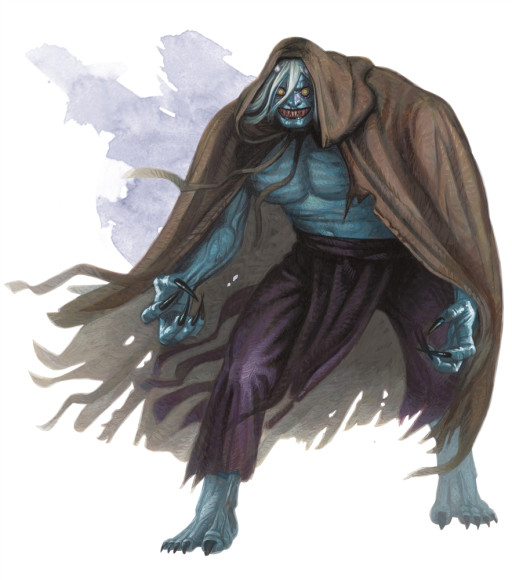
Oni aren't just your average giant, either - they're intelligent in their activities, using their shapechanging abilities to survey towns and settlements for potential victims and ways to kidnap them before embarking on their feast.
Why Oni Are Fun
Using big, ogre-like enemies can already be really fun for a DM, but adding oni into the mix takes it to a whole new level. Their relative intelligence and innate spellcasting abilities can allow them to strategize in battle - your party might be used to things that are as big as an oni just charging into battle without thinking, so a foe that thinks their attacks through and is capable of setting traps might throw them off.
I also really like the oni's shapechanging abilities - they can turn into a Small or Medium humanoid at will. Considering they are known for stalking and observing potential victims, an oni could be hiding right under your players' noses or attempting to gain their trust. There are a lot of roleplay opportunities with this creature, so let your imagination run wild!
Oni Details
- Sourcebook: Basic Rules (pg. 336)
- Classification: Large giant, lawful evil
- Challenge Rating: 7 (2900 XP)
- Environments: Forest, Urban
- Get their stats here.
8. Chain Devil
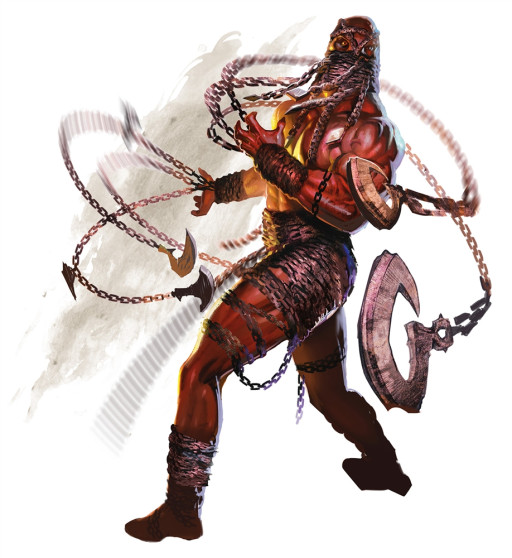
On top of this incredibly frightening visage, this creature can cast illusions around itself briefly that make it look like people you know have died - whether they be your dearly departed grandmother or the first city guard you ever killed.
Why Chain Devils Are Fun
Anything that can take the form of loved ones, deceased or not, immediately adds roleplay opportunities to combat. Especially considering that the chain devil's abilities do psychic damage, you can do a lot of backstory blackmailing with it.
According to the chain devil's flavour text, they can often be found driving other creatures in front of them with the help of their chains. Considering they are the jailers of the Nine Hells, there are tons of different monsters that you can use in conjunction with a chain devil to make interesting, challenging combat encounters. Minor devils, tormented souls, or ethereal figures such as wraiths would all be good companions for a chain devil.
Chain Devil Details
- Sourcebook: Basic Rules (pg. 275)
- Classification: Medium fiend (devil), lawful evil
- Challenge Rating: 8 (3900 XP)
- Environments: Abyss, Nine Hells, Dungeon
- Find their stats here.
7. Mindflayers
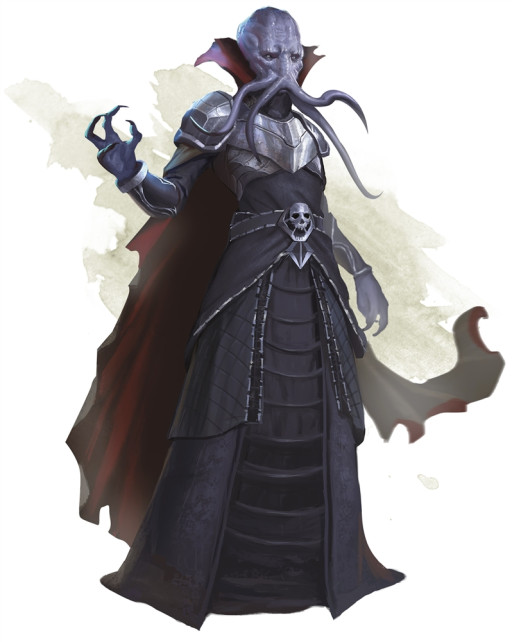
Mindflayers constantly conduct horrific experiments on all manner of creatures, resulting in most of the sick, twisted abominations that populate the Underdark where they reside. They are all connected via a hive mind ruled by a creature called an Elder Brain, and they should not be taken lightly. Unprepared adventurers can easily find themselves enthralled and enslaved by these terrible beings.
Why Mindflayers Are Fun
I think the question really is, why aren't mindflayers fun? These creatures are the ultimate villains - they come from a long dynasty of tyrants and slavers, and they are constantly killing or corrupting other creatures for their twisted ends.
They're more likely to command thralls and experimental creatures to fight the party than engage in combat themselves, but this mechanic makes combat against mindflayer colonies incredibly challenging and interesting. If your party is tired of just obliterating everything that they come across, put them up against a colony of mindflayers to give them a new (terrifying) challenge.
Mindflayer Details
- Sourcebook: Monster Manual (pg. 222)
- Classification: Medium aberration, lawful evil
- Challenge Rating: 7 (2900 XP)
- Environments: Underdark
- Find their stats here.
6. Corpse Flower
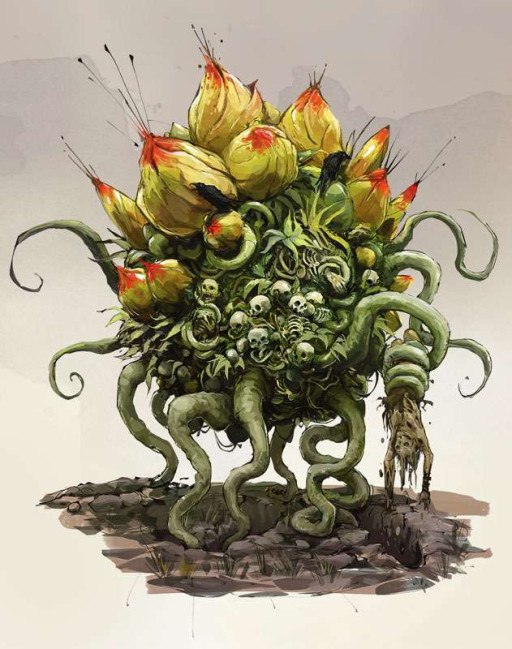
If that wasn't terrifying enough for you, the corpse flower will always have corpses at its disposal when players encounter it. They use these remains to heal themselves during combat - as a bonus action, they can consume a corpse that they've been carrying to heal 2d10 worth of hit points. If they're not using the bodies to restore their health, then they can animate them into zombies that act as allies during battle. Just in case you weren't already horrified.
Why Corpse Flowers Are Fun
This thing is the exact definition of, "Thanks, I hate it." Can you imagine wandering a jungle and coming across a huge plant that smells like death and is stuffed with corpses? The healing mechanic makes them very tough to kill, and if the party wants to recover any part of the corpses that the plant carries, then combat will be instantly time-sensitive.
On top of all that, a corpse flower that has been nesting in a place of death, such as a graveyard or battlefield, has the potential to raise a small army of zombies to protect it - there isn't any limit on how many zombies the plant can create because it doesn't control them. I'm picturing a huge swath of jungle inhabited by hostile corpse-eating plants and their zombie bodyguards - expect to have some nightmares after that one.
Corpse Flower Details
- Sourcebook: Mordenkainen's Tome of Foes (pg. 127)
- Classification: Large plant, chaotic evil
- Challenge Rating: 8 (3900 XP)
- Environments: Forest, Swamp, Urban
- Find their stats here.
5. Aboleth
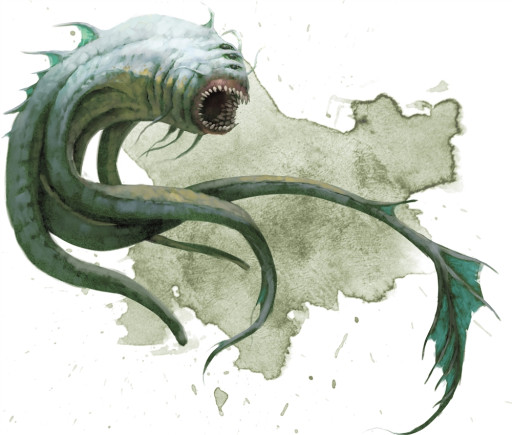
Why Aboleths Are Fun
Aboleths present a lot of unique challenges for players - both their passive and active abilities are pretty unique and hard to prepare for. If the creature is underwater, it exudes a cloud of mucus that can cause disease in any creature that touches it or hits it with any melee attacks.
The disease? You can only breathe water for 1d4 hours, which can cause significant issues in the long run. They can also enslave three creatures per day, charming them and putting them under its control. This can be really fun for DMs, especially if you can manage to turn one party member against the others.
Aboleths are the first critters on our list that have legendary actions, which always makes combat more interesting and challenging. One of their legendary actions is an ability called Psychic Drain, which essentially allows them to drain a creature that they've charmed to heal themselves.
Aboleth Details
- Sourcebook: Basic Rules (pg. 261)
- Classification: Large aberration, lawful evil
- Challenge Rating: 10 (5900 XP)
- Environments: Underdark, Underwater
- Find their stats here.
4. Vampire
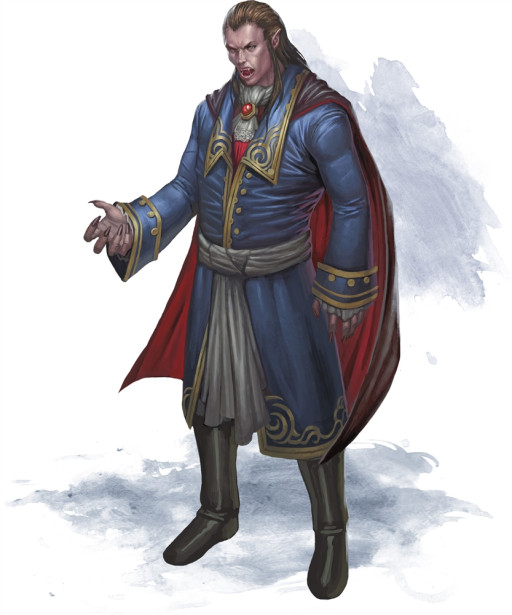
Vampire lairs are often filled with treasure, but they are also filled with danger. Any party contracted to enter must be prepared and vigilant if they are to survive.
Why Vampires Are Fun
If you're seeking a more Gothic atmosphere for your campaign, then a vampire's lair is a great place to start. The regional effects around a lair are things out of old horror movies - hundreds of bats and other vermin, twisted, leafless foliage, and creepy fog that plays tricks on the mind.
D&D vampires adhere very closely to classic vampire lore, and as such, there are certain preparations that parties can take to make their battle easier. Entering a vampire's lair is an exercise in planning and strategy - unprepared parties are very likely to succumb to a vampire's power. Additionally, there's an ample number of opportunities for dramatic, Gothic roleplaying when you add a vampire into your campaign.
Vampire Details
- Sourcebook: Basic Rules (pg. 352)
- Classification: Medium undead (shapechanger), lawful evil
- Challenge Rating: 13 (10 000 XP)
- Environments: Underdark, Urban
- Find their stats here.
3. Devourer
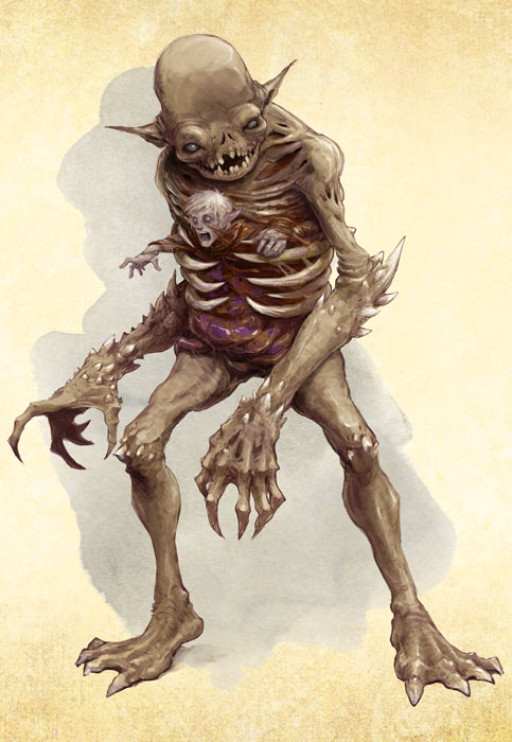
These huge, horrifying creatures are demons who act in service of the demon lord Orcus. Their job is to create new undead soldiers in the most horrifying way possible - they entrap a living creature within their ribcage and torture its soul with psychic attacks until it transforms into a servitor. These are high-level monsters; with a CR of 13 and a range of attacks that do a lot of damage at once, they should not be faced by parties that are any lower than level 12.
Why Devourers Are Fun
These monsters are intelligent enough to strategize, and they can telepathically speak to players - pair that with a high Charisma score, and you've got the potential for some really interesting roleplay moments before combat even begins. Maybe they're clever enough to try and lure the party close so that they can entrap them, or strategic enough to separate members from each other to make them easier to pick off one by one. This monster would be terrifying in a dungeon setting, especially in dungeons that have a lot of illusions at play.
The Devourer has several attacks that can make combat tough for even well-prepared, heavily armored players. Its claw attacks do an average of 32 damage per hit (and that's if you choose not to roll for damage instead), and its Soul Rend ability creates a huge, necrotic vortex that could kill an injured player outright if they aren't careful.
Devourer Details
- Sourcebook: Volo's Guide to Monsters (pg. 138)
- Classification: Large fiend, chaotic evil
- Challenge Rating: 13 (10 000 XP)
- Environment: Underdark
- Get their stats here.
2. Sibriex
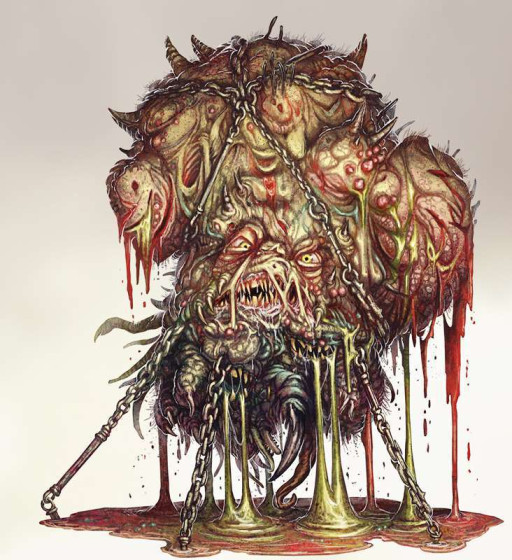
These horrible masses of blood and pus can be found in remote corners of the Abyss, polluting the area with their constantly dripping ooze. They are said to be as old as the Abyss itself, and they spend eons amassing knowledge that makes them useful to other evil entities, such as liches and demon lords.
They have been given the vile ability to manipulate the Abyss and create new demons by transforming other creatures. If they are paid well enough, then they can graft new parts onto an existing demon to increase a particular ability.
Why Sibriexes Are Fun
Firstly, these things are just so gross. It's literally a mass of blood, flesh, and pus that floats around. They contaminate everything around them - the ground is difficult terrain because they're constantly dripping disgusting fluid. One of its attacks is squirting bile at an enemy, inflicting a huge amount of acid damage and more than a little nausea.
Secondly, these creatures are highly intelligent and could potentially bargain and reason with players. Perhaps it has information about a particular demon lord or ritual that the players have been seeking. But they should be wary - this creature cannot be trusted.
Sibriex Details
- Sourcebook: Mordenkainen's Tome of Foes (pg. 137)
- Classification: Huge fiend (demon), chaotic evil
- Challenge Rating: 18 (20 000 XP)
- Environments: Abyss, Underdark
- Find their stats here.
1. Lich
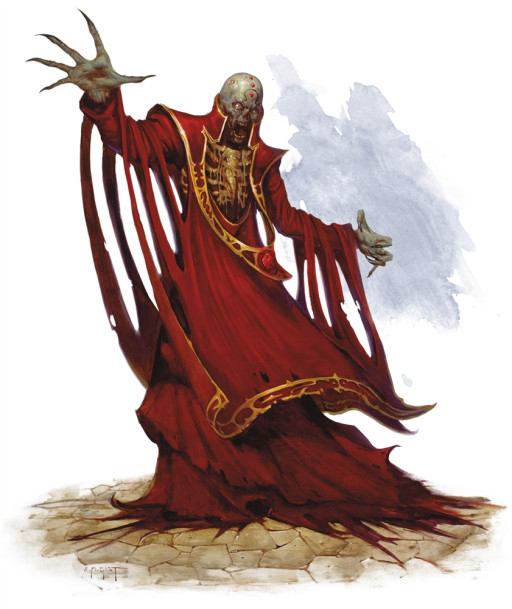
Liches must sustain themselves with the souls of living creatures, and this need causes them to commit horrible atrocities. Often, the presence of a lich in an area will cause every monarch or warlord around to want them dead. But it will not be an easy task.
Why Liches Are Fun
The best thing about a lich is that they can be the villain for an entire campaign - your party doesn't have a chance if they just fight them outright, so they must develop their strength, gain allies, and hunt down the lich's phylacteries if they have any hope of destroying it. That's enough material for a campaign that could take years!
Lich Details
- Sourcebook: Basic Rules (pg. 325)
- Classification: Medium undead, any evil alignment
- Challenge Rating: 21 (33 000 XP)
- Environments: Urban, Underdark
- Find their stats here.

